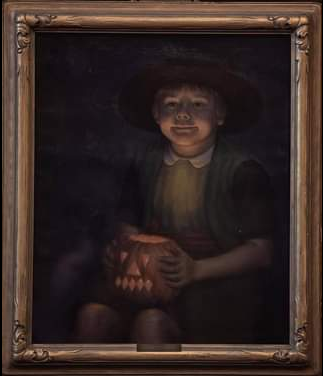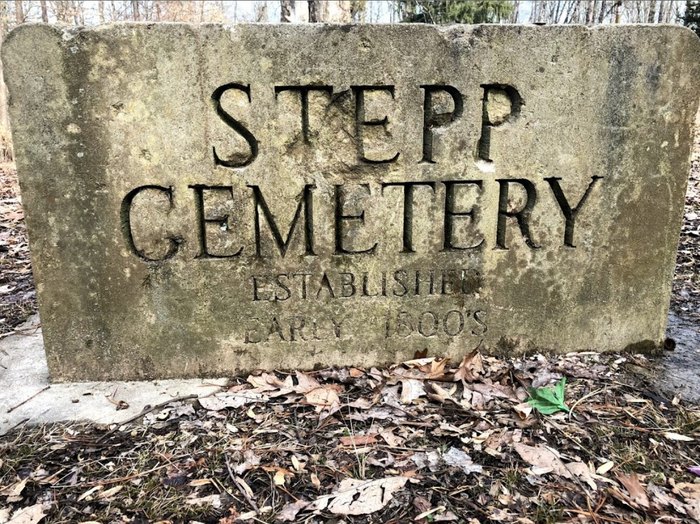Halloween will soon be upon us, and there is so much to discover at the IU Archives during this spooky season! I am currently processing the papers of famed former IU professor of Folklore, Dr. Linda Dégh (1918-2014), and wanted to share a couple of highlights. This is a excellent time of year to explore her collection, as her work on legends placed the supernatural and paranormal as a central focus of her work. She actively collected stories about haunted houses, buildings, cemeteries, roads, bridges, churches and more from across the state. She managed to gather stories from 90 out of Indiana’s 92 counties. These stories include everything from ghosts at Stepp Cemetery, to strange blue lights coming out of houses, to stories of hitchhikers appearing and then vanishing without a trace. These stories came to Dr. Dégh in many different ways: colleagues and students passed along stories they thought would be relevant, she gathered news clippings that recounted bizarre tales, and she collected surveys (mostly from high school students and undergraduate underclassmen) of supernatural experiences and Halloween customs. Many of the places Dr. Dégh documented still stand today and can be visited…if you dare!

Besides the incredible haunted tales to be found in this collection are some materials related to one of IU’s beloved traditions – the annual Ghost Walk. This Department of Folklore and Ethnomusicology event which started in 2001 is an enchanting night-time tour of the campus where you can hear some of the darker, spookier, parts of IU’s past. It should come as no shock that Dr. Dégh was involved in this event, and the collection of her work contains a promotional flyer from the 2nd annual Ghost Walk and some of the stories told on the walk. While processing this collection, I saw the folder containing this information and was inspired to attend this years event.
I want to briefly describe two stories that have become a mainstay of the Ghost Walk, being told both back in 2001 and recently in 2023 (you’ll have to attend next year for the full story!). The tour typically begins at the folklore department and starts with stories related to sightings of the spirit of Richard Dorson, widely considered the “father of American folklore,” and former director of the Folklore Institute at IU. We then wind our way towards the Indiana Memorial Union. Stories of the supernatural and paranormal abound at the IMU but one that has captured my heart is the story of the painting of the mischievous boy Jacob holding a jack-o-lantern known as “Halloween,” painted by O.O. Haig, located in the Tudor Room restaurant. After the staff of the Tudor room meticulously set the tables and floral arrangements for the following day, the tricky spirit of the painting is reported to disrupt the tables and floral arrangements during the night, making a mess for the morning staff. Besides the delightfully spooky tales in our own backyard, there are a couple of other ghost stories from Indiana that I want to share, which are found among the papers of the departed Dr. Dégh.

A place that comes up frequently throughout the collection is Stepp Cemetery located in Morgan-Monroe State Forest, about 15 miles north of Bloomington. This place has two main legends associated with it; the warlock’s chair and the lady in black. The warlock’s chair is a tree stump that has been carved into the shape of a chair. But if you happen to find yourself visiting this cemetery and wish to sit for a rest, be sure to avoid sitting on the warlocks chair – according to legend it is cursed and terrible things befall those who sit upon it. While at this cemetery you may also be visited by the lady in black. The legend varies slightly as to who the lady in black is, but accounts describe a woman dressed in black watching over a grave. The grave is sometimes thought to be the grave of her child, other times thought to be the grave of her husband. Those who have been brave enough to venture to this cemetery, even if they do not sit upon the warlock’s chair or get a visit from the lady in black, report on the eerie atmosphere of the place.
Our next legend takes us near Indianapolis, to the House of Blue Lights. This story relates to an eccentric, usually described as mad, man, Mr. Test, who was known as a hoarder, and reportedly had a large number of cats, dogs, and firearms. When his wife died he buried her in a glass coffin with blue lights surrounding the coffin and placed blue lights throughout the property. It is said that blue was her favorite color. Mr. Test is reported to have strictly protected his property, particularly at night, and accounts described trespassers being shot at or even disappearing. The blue light persisted even after Mr. Test’s death. According to legend, if someone attempts to trespass, the blue lights turn on, and sometimes the blue light can be seen from the road while passing by the house in a car. Visit this haunted Indiana landmark at your peril!
These are just two of the large number of ghost stories and tales of haunted places to be found in the Linda Dégh collection that I have been delighted to share. If ghosts were not enough, the collection also features collected reports of UFO’s, crpytids , ESP and items that claim to grant the owner luck and fortune. If this sounds like the X-Files, you are not far off! These materials weave together a tapestry of legend and myth that speak to the essence of folklore and popular culture in the United States and Europe. The stories I shared today were from Indiana, but her work also spanned the European continent, particularly from her home country of Hungary. I found many stories, in Hungarian, of alleged witches placing hexes or other spells upon livestock, for example. By mentioning this, I hope to preview future updates as we further process this collection and proceed to Dr. Dégh’s research on Hungarian, East European and immigrant folklore and ethnography.
Leave a Reply